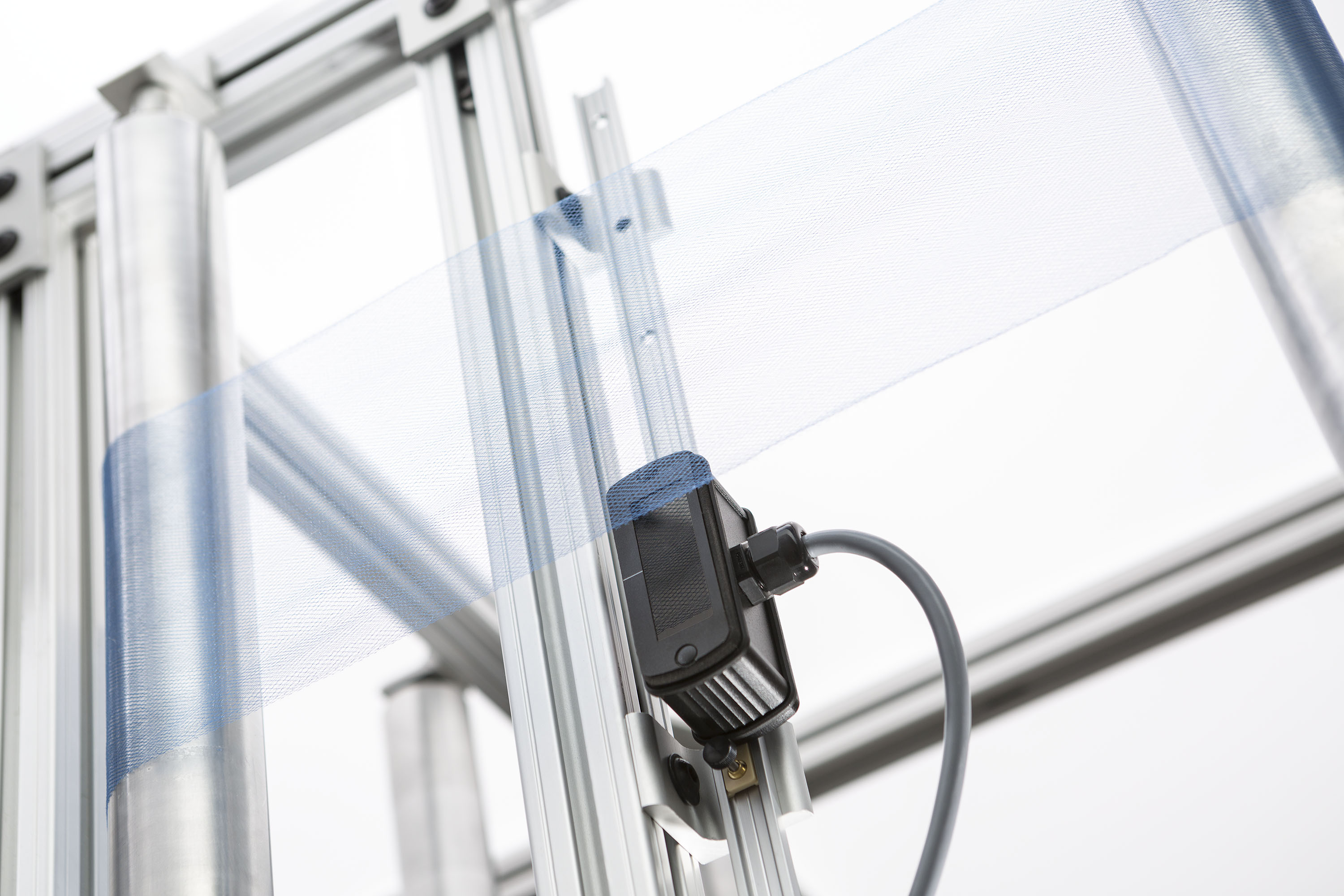In the last few blog posts we saw how Roll-2-Roll® Sensor compares to common sensors, to vision systems and specifically to line scan camera based vision systems. We saw that the Roll-2-Roll® Sensor system is an intelligent embedded sensor with vision capabilities. Unlike typical sensors (such as analog web edge sensors), the vision capabilities enable our sensor to have spatial awareness. This spatial awareness adds intelligence, enabling some unique capabilities for the sensor. In this blog post we will dig deeper into what are the applications that are best suited for the Roll-2-Roll® Sensor.
For Challenging Materials

One of the first applications of our sensor technology is in web guiding where the sensor is used as the feedback device to provide web edge position measurements for a web guiding system. Because of the spatial awareness the sensor was best suited for detecting challenging materials with varying porosity and opacity. For example, the web position of a mesh or a porous web (that cannot be detected accurately with a conventional sensor) can be accurately measured with Roll-2-Roll® Sensors without any need for time consuming calibration. This reduces waste, downtime and setup time when compared to other competing sensors in the market.
For High Accuracy Measurement and Guiding Applications
As seen in the previous blog post, the linear fiber optics enable capture of images without lens error. This enables high resolution, high accuracy measurement even with a wide sensor range. For example, the WPS 900 sensor has a measurement range of over 35 inches while having the ability to provide a resolution of 0.0025 in. That is about 14,000 discrete positions measurement over the entire sensor range.
Web width measurement is one of the most common applications for the Roll-2-Roll® Sensor that is enabled by the high accuracy, high precision measurement over a wide range. Forming machines such as blown film lines and extrusion lines are common places where web width measurement and monitoring is needed. Converting operations such as web folding, shrink sleeve manufacturing and slitting are common places for web width measurement and monitoring. Up to 70 inches of web width variations can be measured at a resolution of 0.005” with Roll-2-Roll® Sensors.
The second key application is web guiding in machines that process materials with varying web width. A wide sensor allows the user to change web widths without the need to move the sensor (manually or automatically). This unnecessary sensor repositioning is a common source of operator error and downtime in those machines. A wide variety of forming and converting lines run different web widths within the same machine and they all benefit from a high accuracy wide sensor.
For Contrast or Registration Mark Detection
Apart from web edge detection of challenging materials, the Roll-2-Roll® Sensor system is also well suited for detecting contrasting features on the web. Line guiding or contrast guiding is a key application for contrast detection. One of the unique value propositions of our sensor is its ability to have a wide sensor range. There are no other sensors in the market for line or contrast guiding that is wider than our smallest sensor, WPS 48. All of our sensors including the WPS 900 can be used for line guiding or contrast guiding applications.
Again the wide sensor range is a key value proposition for registration mark detection and spray ink mark detection applications. Most registration sensors or mark detections sensors have a very narrow field of view, about 2 to 8 mm. The measurement is often plagued by web movement which moves the registration mark away from the field of view of the sensor. To avoid missing the mark, the sensor is installed to chase the web edge so that the mark is never missed. This increases the complexity and cost of the system. Roll-2-Roll® Sensor on the other hand can provide a wide sensor range of 48 mm which can accommodate typically web movement/wander observed in converting lines. With a processing speed of up to 750 Hz or 1.33 milliseconds per image a wide variety of applications benefits from the Roll-2-Roll® Sensor.
For Simple Inspection Applications
Apart from edge and contrast position detection the Roll-2-Roll® Sensor system is also used for simple inspections applications. These applications include flag detection, tear detection, multiple strip width detection, multiple strip gap monitoring, thread/string detection and counting. These are applications where camera based vision systems might be an overkill while a traditional sensor based solution would be impossible.
Conclusion
Roll-2-Roll® Sensor does not provide enough value for some simple applications where the accuracy of measurement is not critical. However, there are some unique value propositions of the Roll-2-Roll® Sensor for the following applications:
- Edge detection and measurement of challenging materials
- High accuracy web width measurement
- Web guiding with wide sensors that eliminate the need for sensor repositioning
- Wide range contrast and line guiding
- Wide range registration and spray ink mark detection
- Flag detection
- Tear detection
- Multiple strip width measurement
- Multiple strip gap monitoring
- Thread/string detection and counting
In the future posts we will cover some of these applications in more detail specifically focusing on ease of use, the problems that they solve and cost savings provided. If any of the above applications are relevant to your operations please contact us to see if our solution would provide the best value for you.
